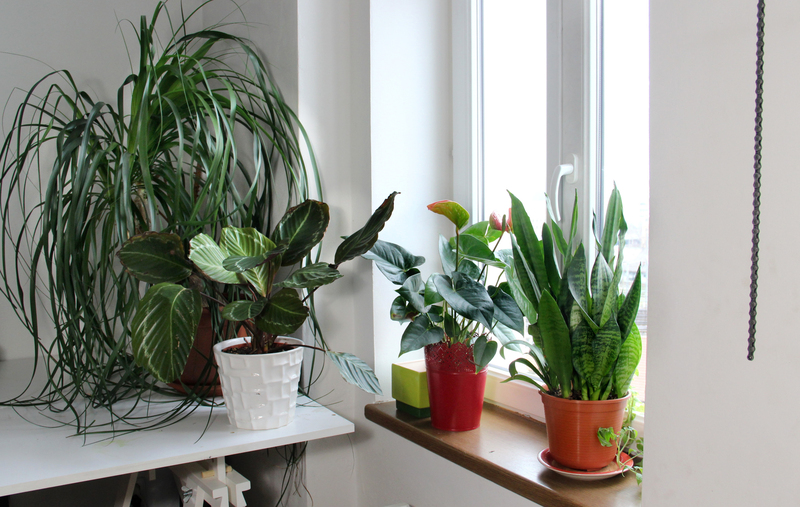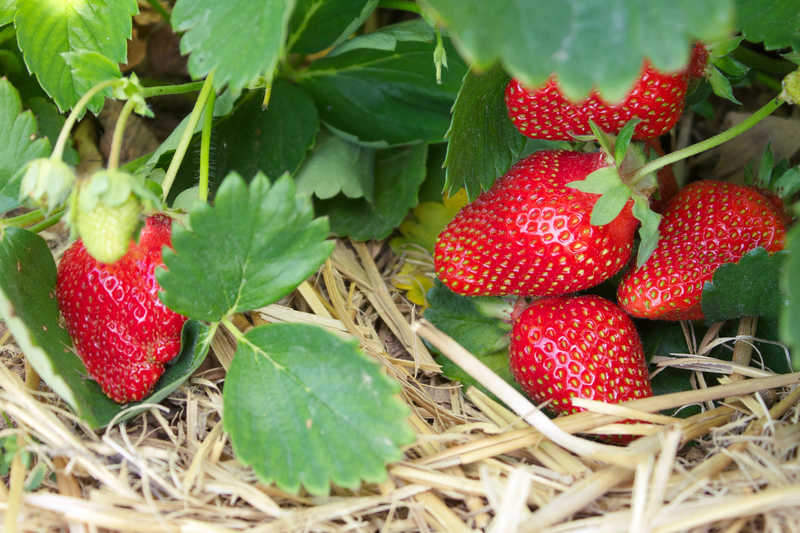Simple Tricks to Remove Tree Stumps and Beautify Your Lawn
When a tree is removed from your yard, the remaining stump can be a stubborn eyesore, disrupting your landscape's harmony and even negatively affecting your property's curb appeal. If you have been struggling to figure out how to remove a tree stump or seeking easy ways to make your garden beautiful again, you're in the right place. With the following simple tricks to remove tree stumps and beautify your lawn, you'll transform your outdoor space into a lush and inviting haven!

Why You Should Remove Tree Stumps
Before we jump into stump removal techniques, let's discuss why getting rid of tree stumps matters:
- Safety: Tree stumps can pose a tripping hazard, particularly for children and the elderly.
- Pest Prevention: Decaying stumps attract unwanted pests, such as termites, beetles, and ants that could migrate to healthy plants--or even your home.
- Improved Lawn Appearance: A clean, stump-free lawn looks bigger, healthier, and more welcoming.
- Easy Maintenance: Removing old stumps makes mowing, weeding, and landscaping simpler.
- Stop Regrowth: Some stumps sprout new growth, making your lawn look messy and potentially leading to further work.
How to Remove Tree Stumps: An Overview
Whether you have a single small stump or several larger remains, there are multiple approaches to tree stump removal. Here's a breakdown of the top simple tricks--from manual digging to natural decomposition and beautifying solutions.
1. Manual Stump Removal
For small to medium-sized stumps with shallow roots, manual removal can be efficient and cost-effective. Here's how you can do it:
- Gather Tools: You'll need a spade, mattock, hand saw, axe, and perhaps a pick or digging bar.
- Dig Around the Stump: Use your spade to dig and expose the roots. Remove as much soil as possible so you can see the large roots beneath.
- Cut the Roots: Use a saw, axe, or loppers to sever major roots. Continue exposing and cutting until the stump loosens.
- Extract the Stump: Wiggle the stump to break free any remaining roots, then pull it out.
- Fill the Hole: Refill with soil and tamp it down to level the lawn.
Tip: If the stump is too heavy, use a rope or chain and a sturdy vehicle to gently pull it free once all roots are cut.
2. Chemical Stump Removal
If manual labor sounds daunting, using chemicals to remove a tree stump can speed up decomposition. This method takes a few weeks or months but requires little physical effort.
- Drill Holes: Use a power drill to bore deep holes into the top and exposed roots of the stump.
- Apply Stump Remover: Pour a commercial stump remover or high-nitrogen fertilizer into the holes, following the product instructions.
- Add Water: Moisten the holes to activate the decomposition process.
- Wait: Over time, the stump will become soft and crumbly. You can then chop up and remove the remains.
Note: Chemical stump removal is best for those not in a hurry but wanting a simple, hands-off approach.
3. Burning the Stump
Burning is another easy stump removal trick where local regulations allow. Here's a safe way to use fire:
- Drill Holes: As with chemical removal, create holes in the stump for airflow.
- Fill with Kerosene: Pour kerosene (not gasoline!) into the holes and let it soak for several days.
- Ignite Carefully: Light the stump, ensuring safety measures like water sources are nearby.
- Monitor the Burn: Supervise the fire until the stump is reduced to ash.
- Remove Ash: Once cooled, clear the debris and fill the spot with soil.
Important! Always follow local fire codes and never leave the fire unattended.
4. Rotting the Stump Naturally
Looking for a natural and eco-friendly way to get rid of tree stumps? Rotting the stump with common household items like Epsom salt or compost is an effective and safe solution.
- Score the Stump: Cut deep grooves or drill holes into the surface for maximum penetration.
- Pack with Epsom Salt: Fill grooves with Epsom salt, which draws moisture and speeds up decay.
- Moisten & Cover: Dampen the area, then cover the stump with plastic to retain moisture and block sunlight.
- Wait: After a few months, the stump will become mushy and can be broken apart easily.
*Rotting is best when you're not in a rush but committed to an all-natural approach.
5. Stump Grinding
For stumps that won't budge manually or are too large for chemical treatments, renting a stump grinder is an efficient option. These machines chew through wood, grinding the stump down to well below ground level.
- Rent from a local hardware or garden center. Stump grinders are affordable for DIYers.
- Follow all operating and safety instructions. Wear protective gear!
- Systematically grind across the stump and surface roots.
- Remove wood chips, then refill the area with topsoil or compost.
Tip: If you're uncomfortable using heavy equipment, professional tree stump removal services can finish the job in no time.
Extra Tips: How to Beautify Your Lawn After Stump Removal
Once the stump is gone, you have a perfect opportunity to not just repair the lawn, but dramatically enhance your garden's beauty. Here are some comprehensive tips for restoring and beautifying your yard after stump removal:
1. Fill and Level the Ground
- Use topsoil or a combination of compost and soil to fill the hole left by the stump.
- Tamp gently, then add more soil until it's even or slightly mounded (it will settle over time).
2. Replant Grass
- Sow quality grass seed that matches the rest of your lawn, or lay sod for instant results.
- Keep the area moist to encourage quick and healthy growth.
- Use a starter fertilizer if needed.
3. Create a Flower Bed or Mulched Area
- Convert the site of the former stump into a vibrant flower bed or island garden.
- Add color with perennials or annuals, and edge with stones, bricks, or timber for a polished look.
- Lay weed barrier and mulch to prevent unwanted growth and retain soil moisture.
4. Install a Garden Feature
- Add a bird bath, small pond, statuary, or even a garden bench.
- These features transform the once-dull space into a focal point for your lawn.
5. Plant a New Tree or Shrub
- If you'd like to restore shade or enhance privacy, plant a new tree or shrub in the area--just avoid the same species to minimize the risk of disease or pest recurrence.
- Leave a few feet from the original spot as old roots decompose.
6. Install Stepping Stones or Pathways
- Design a winding path using pavers, natural stone, or pea gravel.
- It gives the area purpose, redirects foot traffic, and adds structural beauty.
Frequently Asked Questions About Simple Tree Stump Removal
Q: What's the fastest way to remove a tree stump?
The quickest method is generally stump grinding, which can be done in just a few hours. Manual removal can be fast for small stumps, but larger ones are easier and quicker to grind.
Q: Is chemical stump removal safe for pets and the environment?
Most chemical stump removers are designed to become inert after application but always read labels for potential risks and keep pets away until the site is safe.
Q: Can I replant immediately after removing a stump?
You can plant grass or flowers right away if you refill and level the soil properly. For trees or large shrubs, wait a few months to allow any old roots to decompose.
Q: Are there natural methods for stump removal?
Absolutely! Naturally rotting the stump using Epsom salt, compost, or simply encouraging organic decay is safe, eco-friendly, and cost-effective.
Q: Can I just leave the tree stump in place?
While technically you can, old stumps will eventually rot, attract pests, and may cause sucker growth or trip hazards. For a beautiful lawn, it's best to remove them promptly.

Additional Lawn Beautification Ideas After Stump Removal
Transforming a patchy area where a tree stump once stood is a wonderful opportunity to boost the beauty and function of your outdoor space. Explore these creative enhancements:
- Native Wildflower Patch: Sow a blend of native flowers for a pollinator-friendly garden spot.
- Mini Vegetable Garden: Turn the cleared area into a small raised bed for herbs, salad greens, or tomatoes.
- Decorative Gravel Garden: Lay weed barrier, cover with colored gravel, and add drought-tolerant plants and garden ornaments.
- Outdoor Seating Nook: Use a bench, a couple of chairs, and some solar lights to craft a new relaxation zone.
- Fairy Garden for Kids: Let children's imaginations run wild in the space where a stubborn stump once lay.
Conclusion: Enjoy a Beautiful, Stump-Free Lawn
Removing a tree stump might seem like a daunting challenge, but with the right simple tricks for tree stump removal, you can easily reclaim and beautify your lawn. Whether you opt for manual labor, natural decomposition, or mechanical grinding, your commitment to tackling that old stump will be rewarded with a safer, more beautiful yard. Don't forget to follow up with smart landscaping and creative gardening ideas to enhance the area and make your lawn the envy of the neighborhood.
For best results, choose the stump removal method that matches your resources, patience, and vision for your outdoor space. With this comprehensive guide, you'll be well on your way to a lush, inviting, and truly beautiful lawn!
Start your journey toward a stump-free, gorgeous lawn today--and watch your curb appeal blossom like never before!